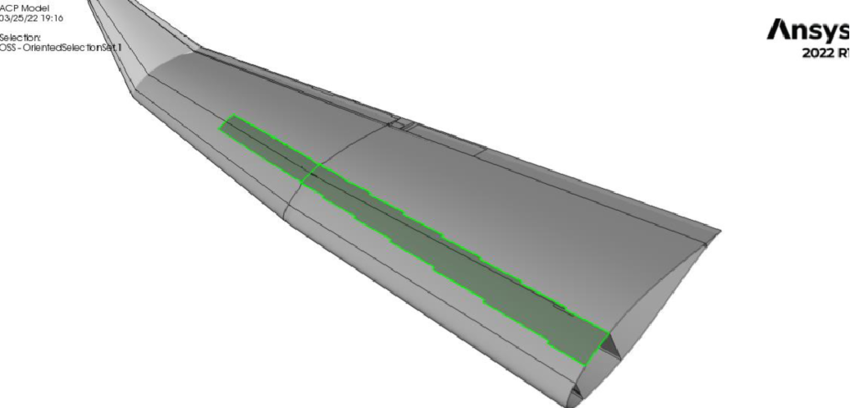How to Create and Manage Node and Element Sets?

Managing node and element sets is essential in structural analysis software, as it helps engineers organize their models efficiently, apply loads and boundary conditions, and streamline post-processing tasks. Understanding how to create, modify, and utilize these sets effectively improves workflow efficiency and ensures accurate simulation results.
Such knowledge can significantly enhance your productivity and improve the organization and reusability of your projects. This guide will tell you about the tools and techniques for creating and managing node and element sets, with a focus on selectors and grouping techniques.
Understanding Node and Element Sets
Node and element sets serve as logical groupings within a finite element model, allowing efficient application of loads, boundary conditions, and material properties.
- Nodes represent discrete points in the model where primary variables, such as displacement, are stored and interpolated..
- Structural elements (beams, shells, solids) are connected by nodes, element behavior is governed by the type of interpolation function used. Grouping nodes and elements into sets enables users to apply constraints, loads, and materials more efficiently, reducing the risk of errors and increasing model organization.
(source)
Tools and Techniques for Creating Node and Element Sets
Different structural analysis software solutions offer various techniques for creating node and element sets. Below are some common approaches:
1. Manual Selection
Users can manually select nodes or elements by clicking within the graphical interface. This method is effective for small models but can become inefficient for complex structures or can also choose node ID number manually.
2. Geometric and Property-Based Selection
Many FEA tools allow selection based on geometric criteria, such as:
- Selecting all nodes/elements within a bounding box.
- Choosing elements with similar material properties or section types.
- Filtering by coordinate ranges or specific locations and all nodes and elements on certain geometrical body.
3. Rule-Based Selection (Boolean Operations)
Advanced FEA software allows users to define sets dynamically using Boolean logic. This includes operations like:
- Selecting all elements connected to a given node
- Excluding elements from a predefined group
- Combining sets using union, intersection, or difference
However, the effectiveness of these operations depends on the software’s implementation and the quality of the mesh. Boolean operations may produce unexpected results in models with duplicate elements, unmerged nodes, unstructured meshes, or intersecting sets.
(source)
4. Using Naming Conventions and ID Filters
Assigning meaningful names to sets ensures consistency across models. Engineers can also filter nodes/elements using specific IDs or numerical ranges, making it easier to reference them in scripts or automation workflows.
5. Automated Selection Using APIs and Scripts
Scripting can significantly reduce manual effort and improve repeatability in set creation. Many FEA tools—such as Abaqus and Ansys—support Python scripting, while others like Nastran use proprietary languages (e.g., DMAP). API access for programmatically generating node and element sets varies across software. Tools like SDC Verifier provide robust API support, enabling users to define sets based on predefined criteria efficiently.
Selector Control and Search Functions
Selector tools help engineers refine and create node and element sets quickly. For example, in structural analysis software SDC Verifier, the Selector Control panel enables users to:
- Search for nodes/elements by ID.
- Apply text-based filters to locate specific groups.
- Toggle between all, selected, and unselected items for efficient selection refinement, search on property, material, type of element, also use recognizes sets from element recognition such as beams, joints, panels, welds.
Other FEA software solutions, such as Ansys, Abaqus, and Nastran, offer set definition capabilities, though their approaches vary.
Ansys and Abaqus support node and element sets through GUI-based filtering and scripting, while Nastran relies on bulk data entries like SET1, ELSET, and GRIDs.
It’s important to note that not all tools support dynamic set updates or consistent handling of sets across different workflows..
Best Practices for Managing Node and Element Sets
1. Use Clear and Consistent Naming Conventions
- Adopt a standard naming system (e.g., LoadNodes_Beam1, ShellElements_Plate2) to simplify identification.
- Avoid generic names like “Set1” that can cause confusion in large models.
2. Leverage Hierarchical Organization
- Group smaller sets into larger assemblies to maintain clarity.
- Use subcategories to differentiate loads, constraints, and analysis-specific selections.
3. Handle Overlapping and Exclusive Sets Carefully
- In large models, nodes or elements often belong to multiple sets. Managing overlapping sets is essential to avoid conflicts, especially in tasks like post-processing or load application.
- When exclusivity is required—such as defining disjoint groups for parallel computation or distinct boundary conditions—ensure that sets do not share common nodes or elements.
4. Document Selection Criteria
- Maintain a log or metadata file explaining how each set was defined.
- Include selection logic within the software’s annotation tools.
5. Automate When Possible
- Utilize scripts or built-in automation features to reduce repetitive tasks.
- Store selection criteria as reusable templates.
6. Validate Sets Before Running Simulations
- Visually inspect selected sets to confirm they include the intended nodes/elements.
- Run preliminary checks to ensure constraints and loads are correctly applied.
Conclusion
Managing and creating node and element sets is a critical skill for engineers across various disciplines. By using selectors and grouping techniques effectively, you can improve project maintainability, streamline model updates, and reduce manual effort. When selection rules are defined correctly, sets can automatically adapt to model changes, improving reusability and making the workflow more efficient—especially during iterative design or analysis processes. Also, if rules for sets selection are prepared correctly, they don’t need to be updated each time the model is revised which makes it faster.
Remember, the key to success lies in simplicity, performance optimization, thorough testing, and staying updated with the latest tools and best practices. With these strategies, you’ll be well-equipped to handle the complexities of node and element management in your engineering projects.









